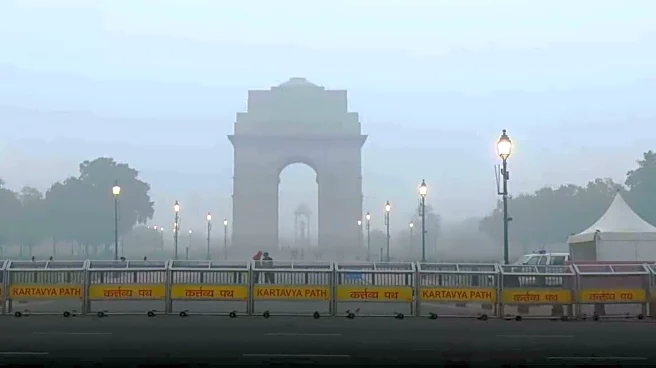In a first-of-its-kind experiment, Delhi carried out a cloud seeding operation on Tuesday in an attempt to fight its worsening air pollution. The project, led by the Indian Institute of Technology (IIT)
Kanpur, saw a Cessna 206H aircraft take off from the institute’s airstrip for the much-awaited artificial rain trial.
The small aircraft flew over several parts of the Capital, including Burari, Mayur Vihar, and Karol Bagh, dispersing specially designed chemical flares into the atmosphere. These flares contained compounds such as silver iodide and salt, which help water droplets in clouds combine and form rain. Officials said this marks India’s first-ever official cloud seeding operation.
The trial was conducted as Delhi continues to struggle with severe air pollution, with the Air Quality Index (AQI) hovering at “severe” levels for days. The city government, under Chief Minister Rekha Gupta, approved the experiment as part of emergency measures to bring some relief to Delhiites choking on toxic smog.
According to officials, the weather on Tuesday was partly favourable, with cloud humidity levels at around 15–20 percent. The aircraft released eight flares during a half-hour operation, each lasting about two to two-and-a-half minutes.
How Long Will It Take To Rain?
Delhi’s Environment Minister Manjinder Singh Sirsa, citing experts from IIT Kanpur, said that rainfall — if it occurs — could take place anywhere between 15 minutes and 4 hours after the cloud seeding operation, depending on factors such as wind direction, temperature, and the moisture content of the clouds.
The minister further noted that the India Meteorological Department (IMD) has reported northward winds, suggesting that any rainfall is likely to occur over parts of Outer Delhi.
“If it is successful, in days to come, a long-term plan can be drawn till February. Such sorties will continue in the days to come. 9-10 trials will be done every day as the weather permits,” Sirsa added.
But What’s The Typical Timeframe For Rain To Occur?
Experts explain that the time taken for rainfall to begin after cloud seeding depends largely on atmospheric conditions and cloud readiness.
- If conditions are ideal: Rain can begin within 15 to 30 minutes after seeding.
- In moderate conditions: It may take 30 minutes to 2 hours for rainfall to start.
- Under unfavourable or marginal conditions: Rain may take several hours, or sometimes no rainfall occurs at all if the clouds fail to develop adequately.





/images/ppid_59c68470-image-176163004632793160.webp)







